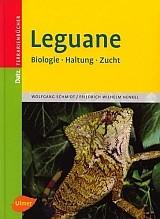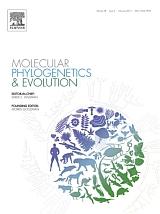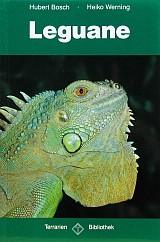




Related bibliographies:
Reptiles
 Lizards Lizards
 Callisaurus Callisaurus
 Cophosaurus Cophosaurus
 Holbrookia Holbrookia
 Petrosaurus Petrosaurus
 Phrynosoma Phrynosoma
 Sceloporus Sceloporus
 Uma Uma
 Urosaurus Urosaurus
 Uta Uta
Central America
North America






































































































































































































































































































































| |

Bibliography of the family
Phrynosomatidae (North American Lesser Iguanas)

(Reptilia: Sauria)
Note:
In order to limit redundancy, relevant literature indexed in the related bibliographies in the left column may not have been included in this page. For a comprehensive search of literature, these bibliographies should therefore also be consulted.
 |
Arnold, E.N. 1996. The role of biological process in phylogenetics with examples from the study of lizards. Memorie della Societa Italiana di Scienze Naturali e del Museo Civico di Storia Naturale di Milano 27(1): 9-20.
Bille, T. 2001. En introduktion til Mexicos herpetofauna. 5. Øgler. [An introduction to the herpetofauna of Mexico. 5. Lizards.] (In Danish, English summary). Nordisk Herpetologisk Forening 44(1): 10-25.
Bille, T. 2001. En introduktion til Mexicos herpetofauna. 6. Tilføjelser til familien Phrynosomatidae. [An introduction to Mexico's herpetofauna. 6. Additions to the family Phrynosomatidae]. (In Danish, English summary). Nordisk Herpetologisk Forening 44(5): 146-152.
Bonine, K.E.; Garland, T. 1999. Sprint performance of phrynosomatid lizards, measured on a high-speed treadmill, correlates with hindlimb length. Journal of Zoology (London) 248(2): 255-265.
Etheridge, R.E. 1964. The skeletal morphology and systematic relationships of sceloporine lizards. Copeia 1964: 610-631.
Henkel, F.W.; Schmidt, W. 2006. Leguane. Biologie, Haltung, Zucht. 2nd rev. ed. Ulmer, Stuttgart. 160 pp.
Herrel, A.; Meyers, J.J.; Vanhooydonck, B. 2002. Relations between microhabitat use and limb shape in phrynosomatid lizards. Biological Journal of the Linnean Society 77(1): 149-163.
Lambert, S.M.; Wiens, J.J. 2013. Evolution of viviparity: a phylogenetic test of the cold-climate hypothesis in phrynosomatid lizards. Evolution 67(9): 2614-2630.
Olberding, J.P.; Herrel, A.; Higham, T.E.; Garland, T. 2016. Limb segment contributions to the evolution of hind limb length in phrynosomatid lizards. Biological Journal of the Linnean Society 117(4): 775-795.
Oufiero, C.E.; Gartner, G.E.A. 2014. The effect of parity on morphological evolution among phrynosomatid lizards. Journal of Evolutionary Biology 27(11): 2559-2567.
Quintero, I.; Wiens, J.J. 2013. What determines the climatic niche width of species? The role of spatial and temporal climatic variation in three vertebrate clades. Global Ecology and Biogeography 22(4): 422-432.
Reeder, T.W. 1995. Phylogenetic relationships among phrynosomatid lizards as inferred from mitochondrial ribosomal RNA sequences: substitutional bias and information content of transitions relative to transversions. Molecular Phylogenetics and Evolution 4(2): 203-222.
Schulte, J.A.; Queiroz, K. de 2008. Phylogenetic relationships and heterogeneous evolutionary processes among phrynosomatine Sand Lizards (Squamata, Iguanidae) revisited. Molecular Phylogenetics and Evolution 47(2): 700-716.
Watson, C.M.; Makowsky, R.; Bagley, J.C. 2014. Reproductive mode evolution in lizards revisited: updated analyses examining geographic, climatic and phylogenetic effects support the cold-climate hypothesis. Journal of Evolutionary Biology 27(12): 2767-2780.
Werning, H. 2018. Nordamerikanische Kleinleguane – Die Familie Phrynosomatidae. Reptilia (D) 131: ?
Wiens, J.J. 1998. Testing phylogenetic methods with tree congruence: phylogenetic analysis of polymorphic morphological characters in phrynosomatid lizards. Systematic Biology 47(3): 427-444.
Wiens, J.J. 1999. Phylogenetic evidence for multiple losses of a sexually selected character in phrynosomatid lizards. Proceedings Royal Society of London Series B Biological Sciences 266(1428): 1529-1535.
Wiens, J.J. 2000. Decoupled evolution of display morphology and display behaviour in phrynosomatid lizards. Biological Journal of the Linnean Society 70(4): 597-612.
Zúñiga-Vega, J.J.; Fuentes-G., J.A.; Ossip-Drahos, A.G.; Martins, E.P. 2016. Repeated evolution of viviparity in phrynosomatid lizards constrained interspecific diversification in some life-history traits. Biology Letters 12(11): 20160653.
|
| | 


















































































































































































|

